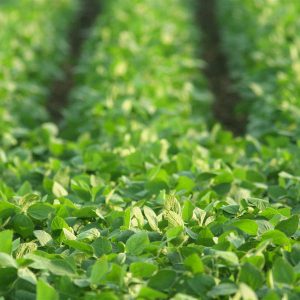
A Lesson in Lecithin
Have you ever come across “lecithin” while scrutinizing the ingredient list of a favorite supplement? Have you wondered why lecithin was included in the mix? Because it benefits the horse on both the inside and outside, lecithin is anything but an “empty” ingredient.
Lecithin is a combination of phospholipids that occur naturally in some plants. Made of many components including fatty acids, phospholipids are involved in a host of physiological processes. While fatty acids work doggedly on the cellular level, horsemen often see the results of their effort on the exterior in the form of healthy, pliable skin and a slick, shiny coat.
Lecithin is rich source of choline, a vital part of every cell membrane in the body. Without choline, cell membranes would harden, prohibiting the passage of life-sustaining nutrients in and out of the cell. Researchers believe that lecithin and choline provide multiple health benefits: improved cardiovascular health, heightened liver function, optimal reproductive efficiency and fetal development, and enhanced athletic performance.
So, where does lecithin come from? Most lecithin is created during the manufacture of soybean oil. Once soybeans are cleaned, cracked, and separated from their hulls, they are heated and pressed into flakes. The flakes then undergo a distillation process in which soybean oil is extracted from them. Further processing of the oil yields lecithin. Though soybean oil provides the majority of lecithin in use, lecithin is also extracted from alternate sources such as sunflower oil.
A perfusion of anecdotal evidence suggests that dietary fat improves tractability in horses. Countless horsemen recognize the difference in the temperament of hot or anxious horses when they are switched from high-starch diets to high-fat, high-fiber diets. A study that underscores this belief centers on lecithin and its effect on behavior in horses when fed with a high-fat supplement.
Equine nutritionists at Virginia Polytechnic Institute and State University compared the behavior of horses fed one of four diets, some of which included lecithin and a high-fat supplement.¹ The control diet contained chopped hay, corn, crimped oats, beet pulp, molasses, and a mineral mix. The three test diets contained additional corn oil, a combination of soy lecithin and corn oil, or a combination of soy lecithin and soy oil. Horses consumed the diets for four weeks. During the last week of the trial, spontaneous activity as well as reactivity to direct pressure and startling stimuli were measured. Spontaneous activity was recorded using a pedometer made specifically for horses. Reactivity was measured through the use of a penetrometer, a device that measures the amount of pressure applied to a specific point. In this trial, specific points included an area directly in front of the jaw and near the point of the hip. Startle reaction was brought about by visual (a brightly colored umbrella opened abruptly) or auditory (a metal can full of coins rattled) stimuli. Subjective scores were given to each horse based on its reaction.
Results of the study supported the researchers’ opinion that the test diets would encourage tractability among horses. In fact, horses fed lecithin in combination with corn or soy oil showed reduced spontaneous activity and less response to the visual stimulus test. The results of this trial lend credence to the notion that horses consuming fat-supplemented diets are less active and have reduced excitability and anxiety than horses consuming a traditional starch-laden diet.
Another study conducted by researchers at Otterbein College and Virginia Polytechnic Institute and State University tested soybean lecithin’s effect on responses to sprint exercise. In this study, eight physically fit Arabians were fed one of two diets. Both diets contained the same amount of calories. The test diet contained 14% fat, 50% of which was derived from soy lecithin. The other diet served as the control. Horses were fed the diets for two 10-weeks periods. At the end of these periods, horses performed a standard exercise test on a high-speed treadmill. Venous and arterial blood was harvested prior to, during, and after the exercise test. Researchers determined that the diet containing lecithin as half of its total fat content may have delayed fatigue in the horses that consumed it. By reducing fatigue, equine athletes are able to work longer before feeling the effects of exertion.²
Two supplements offered by Kentucky Performance Products contain lecithin, Ker-A-Form, a hoof and coat conditioner, and EndurExtra, the high-fat supplement that is used to increase the energy density of a ration.
Fun Footnote
Lecithin was first discovered in the 1800s by the French scientist Maurice Gobley. He christened his discovery “lekithos,” which is the Greek word for egg yolk. Because Gobley first extracted lekithos from yolk, the name proved apropos. Now, however, the compound is referred to as lecithin. For many years, eggs were the primary source of lecithin, but they proved to be too expensive for commercial production of the compound. Soybeans were first recruited for the job in Germany in the 1920s and have been the primary source of lecithin since the 1930s.
¹Holland, J.L., D.S. Kronfeld, and T.N. Meacham. 1996. Behavior of horses is affected by soy lecithin and corn oil in the diet. J. Anim. Sci. 74:1252-1255.
²Taylor, L.E., D.S. Kronfeld, P.L. Ferrante, and J.A. Wilson. 1999. Acid-base responses to repeated sprint exercise, training, and a lecithin/corn oil diet. In: Proc. Equine Nutr. Physiol. Soc. 108-109.


